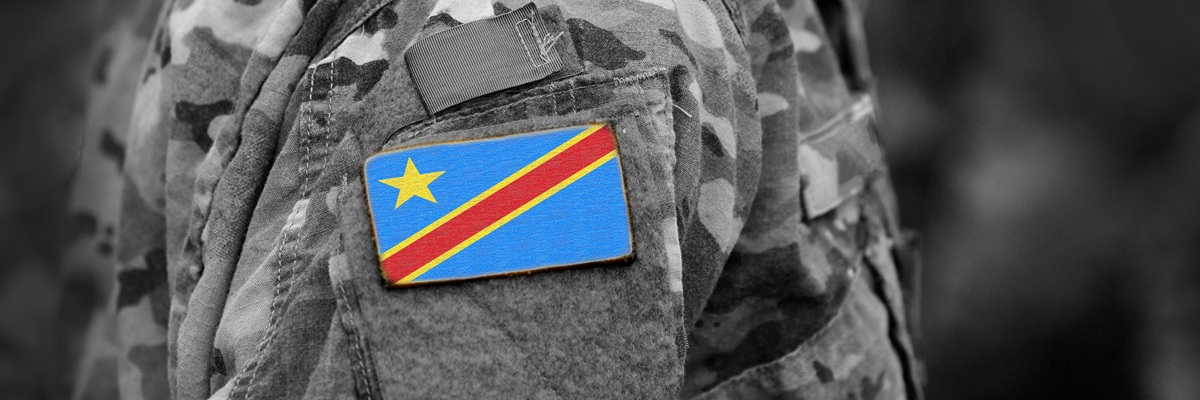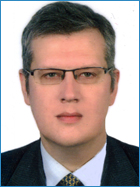Defense & Security
Conflict in the East of the Democratic Republic of Congo: New Reality

Image Source : Shutterstock
Subscribe to our weekly newsletters for free
If you want to subscribe to World & New World Newsletter, please enter
your e-mail
Defense & Security

Image Source : Shutterstock
First Published in: Jan.29,2025
Feb.24, 2025
The conflict in the African Great Lakes region, which had long remained in a low-intensity state, flared up again in the second half of January 2025. In the North Kivu province of the Democratic Republic of the Congo (hereinafter – DRC), rebel forces of the anti-government group M23, fighting against the Armed Forces of the DRC (Forces Armées de la République Démocratique du Congo, FARDC), launched an offensive and captured new territories. As of January 27, M23 entered the city of Goma, the largest city in the province [1]. Moreover, the DRC authorities claim that the city is also occupied by regular units of the Rwandan Armed Forces [2]. The rebel offensive has triggered panic and an outflow of local residents as well as refugees – Goma had been a refuge for several hundred thousand displaced persons. There are casualties not only among civilians but also among the UN peacekeeping contingent (Mission de l'Organisation des Nations Unies pour la Stabilisation en République Démocratique du Congo, MONUSCO) and peacekeepers from the Southern African Development Community – Southern African Development Community Mission in the Democratic Republic of Congo, SAMIDRC. The escalation of the conflict has been condemned by leading world powers and the United Nations – the UN Security Council has demanded an immediate ceasefire [3].
Rwanda plays a distinct role in these events. The Congolese rebel group M23 consists of ethnic Tutsis living in the DRC and aims to “ensure the rights of the Tutsi ethnic minority in the DRC” [4]. It was formed in 2012 and, after several military operations against government forces, ceased hostilities. However, in October 2022, M23 resumed military operations in North Kivu. The DRC government almost immediately accused Rwanda of fully supporting M23 — accusations that Rwanda has categorically denied and continues to deny to this day [5]. However, the United States and several European countries, citing intelligence reports, have openly stated that M23 is being used by Rwanda as a proxy force to conduct military operations in the eastern DRC [6].
The current fighting in North Kivu is a direct consequence of the failed attempt by the government of the Republic of Angola to mediate the peace process. The President of the DRC, Félix Tshisekedi, ran in the 2018 elections partly on a promise to achieve peace in the east of the country. However, throughout his time in office, he has failed to make any significant progress in this direction. In 2024, Angolan President João Lourenço proposed direct negotiations between the leaders of Rwanda and the DRC [7], which led to the signing of a ceasefire agreement between the two countries at the end of June 2024. However, further progress toward peace encountered a major obstacle: Tshisekedi categorically refused to recognize M23 as a participant in the negotiation process, stating that they are terrorists with whom direct dialogue is impossible [8]. Nevertheless, after a series of meetings between the foreign ministers of Angola, the DRC, and Rwanda, an agreement was reached that M23 representatives would still take part in the negotiations [9]. However, the trilateral summit in Luanda, scheduled for December 15, 2024, was canceled just days before it was set to take place. Both sides blamed each other for the meeting’s collapse [10].
As it now appears, the failed summit may have served as a starting point for M23's January offensive in North Kivu. Shortly before the outbreak of hostilities, Angola’s Foreign Minister, Téte António, during a working breakfast with members of the UN Security Council, called on the Council to continue its strong support for the negotiation process, effectively acknowledging that Angola’s efforts on this track had failed [11]. At the same time, Rwanda’s Foreign Minister, Olivier Nduhungirehe, speaking at the UN Security Council on counterterrorism issues, sharply criticized the DRC government, stating that “despite the direct and clear threat of terrorism, the DRC is trying to divert attention from addressing real problems” and accusing the DRC of distorting the actual situation in the east of the country [12]. Just days after these statements, M23 launched its offensive.
It is important to note that the rebels launched their offensive well-prepared. As early as October 2024, reports emerged that revenue from the sale of minerals was bringing M23 at least $300 000 per month, which the rebels used to arm and equip their combat units. For more than a year, M23 has controlled mines in the Rubaya area of North Kivu — these deposits contain 15% of the world’s coltan reserves, a strategically critical mineral essential for high-tech industries [13]. At the same time, FARDC units stationed in the province suffered from supply shortages and demonstrated low combat readiness [14]. As a result, M23 forces rapidly broke through, capturing key cities in the province.
Currently, M23 (and, as it is believed, the Rwandan army) has taken control of the cities of Sake and Goma — securing all key crossroads and roads in this part of North Kivu. Sake provides M23 with a route south to the Numbi mining region, which is rich in tin, tantalum, niobium, and tungsten [15]. If this region also falls to the rebels, the revenue from mineral extraction and sales will reach enormous levels, transforming M23 from a purely military force into a political power. Additionally, Goma is a port on Lake Kivu, and with access to watercraft, the rebels could launch amphibious operations anywhere along the northern shores of the lake, further expanding their controlled territory.
The most enigmatic factor at the moment remains the behavior of Rwandan President Paul Kagame. Since the start of M23's offensive on Goma, his administration has not issued a single official statement. The last time Kagame commented on the situation in North Kivu was during a press conference on January 9, where he expressed hope that the new U.S. administration would take a more thoughtful and balanced approach to the conflict, considering all influencing factors [16]. On January 26, 2025, Rwanda’s Ministry of Foreign Affairs released a press statement expressing deep concern over the renewed escalation and reaffirming its commitment to a political resolution [17]. Apart from this, there have been no high-level statements from Kigali. However, political experts from various countries unanimously agree that all Rwandan state institutions, particularly the armed forces, are under Kagame’s total control [18]. They assert that any involvement of the Rwandan military in the DRC conflict — whether confirmed or merely suspected — would be impossible without his direct order.
The most likely assumption is that Rwandan President Paul Kagame has begun implementing his long-term strategy: creating a buffer zone in eastern DRC with the help of M23. This would not only push the border further away (currently, the distance from Kigali to the DRC border is 150 km) but also significantly improve Rwanda’s economic position. The buffer zone’s territory would provide Rwanda with abundant water, agricultural, and mineral resources [19]. Moreover, such a buffer zone would give Kagame additional leverage in future negotiations, as the territories occupied by M23 would be directly linked to the political resolution of the conflict.
A new territorial reality has already been established in eastern DRC. For Angolan President João Lourenço, this is a highly unfavorable outcome — his bid to become a regional peacemaker has failed [20]. One possible reason for Lourenço’s failure is the loss of U.S. interest in the DRC conflict at the end of 2024. As some analysts suggest, “Once Washington stopped applying pressure, Rwanda realized there was nothing to fear and withdrew from the negotiation process” [21]. Now, the task of translating this territorial reality into diplomatic and political terms has been taken up by Kenyan President William Ruto. On January 27, he issued an official statement announcing that a meeting between DRC President Félix Tshisekedi and Rwandan President Paul Kagame would take place in the near future. If this meeting occurs and results in any agreements, it will mark a diplomatic success for Ruto and strengthen his position on the regional stage [22].
Notes:
[1] Rwandan-backed rebels enter Congo's Goma in major escalation // https://www.reuters.com/world/africa/rebels-enter-centre-congos-goma-after-claiming-capture-city-2025-01-27/
[2] DR Congo says Rwanda army in Goma // https://www.dw.com/en/dr-congo-says-rwanda-army-in-goma/a-71422564
[3] Rebel Conflict in Congo Escalates with Capture of Goma // https://www.asisonline.org/security-management-magazine/latest-news/today-in-security/2025/january/goma-capture-congo-M23/
[4] Luanda summit postponed: Kinshasa’s maneuvers to frustrate peace process // https://www.thegreatlakeseye.com/post?s=Luanda--summit--postponed%3A--Kinshasa%E2%80%99s--maneuvers--to--frustrate--peace--process_1626
[5] Rwanda denies backing armed group in DRC // https://www.theeastafrican.co.ke/tea/news/east-africa/dr-congo-accuses-rwanda-of-backing-militia-violence-3828930
[6] Rwandan army ‘ready to invade DRC’ and help rebels seize city // https://www.theguardian.com/global-development/2025/jan/25/rwandan-army-ready-to-invade-drc-and-help-rebels-seize-city
[7] Presidente angolano propõe diálogo directo entre Rwanda e RDC // https://angop.ao/noticias/politica/joao-lourenco-propoe-dialogo-directo-entre-rwanda-e-rdc/
[8] Avancée du M23: Discours de Félix Tshisekedi (Intégralité) // https://actualite.cd/2022/11/04/avancee-du-m23-discours-de-felix-tshisekedi-integralite
[9] POSTPONEMENT OF LUANDA SUMMIT DUE TO UNRESOLVED CRITICAL ISSUES // https://www.minaffet.gov.rw/updates/news-details/postponement-of-luanda-summit-due-to-unresolved-critical-issues
[10] Emergency ministerial meeting on the current escalation of the conflict in Eastern DRC // https://amaniafrica-et.org/emergency-ministerial-meeting-on-the-current-escalation-of-the-conflict-in-eastern-drc/
[11] Angola Aims for UN Security Council Support On DRC Issue // https://allafrica.com/stories/202501230042.html
[12] Africa: Rwanda Proposes Five Steps to Reinforce Africa's Counter-Terrorism Effort // https://allafrica.com/stories/202501230067.html
[13] M23 rebel roup generates approximately $300,000 a month from mining-UN // https://www.africanews.com/2024/10/01/m23-rebel-group-generates-approximately-300000-a-month-from-mining-un//
[14] Advancing M23 Fighters In DR Congo Aided By Rwanda Backing, Army Weakness // https://www.barrons.com/news/advancing-m23-fighters-in-dr-congo-aided-by-rwanda-backing-army-weakness-f021df51
[15] Petrology and Detail Geological Mapping of the Precambrian Basement Rocks of the Sn-Ta-Nb Numbi Deposit, Democratic Republic of the Congo // https://www.iieta.org/journals/eesrj/paper/10.18280/eesrj.090102
[16] Africa’s anticipation of Trump’s foreign policy // https://en.igihe.com/politics-48/article/africa-s-anticipation-of-trump-s-foreign-policy
[17] STATEMENT ON SITUATION IN EASTERN DRC // https://www.minaffet.gov.rw/updates/news-details/statement-on-situation-in-eastern-drc
[18] The Case Against Rwanda's President Paul Kagame // https://www.newsweek.com/case-against-rwandas-president-paul-kagame-63167
[19] What does Rwanda want in the DRC? // https://www.egmontinstitute.be/what-does-rwanda-want-in-the-drc/
[20] Thousands uprooted as Congo M23 rebels near Goma in major advance // https://www.yahoo.com/news/thousands-uprooted-congo-m23-rebels-105837754.html
[21] Advancing M23 Fighters In DR Congo Aided By Rwanda Backing, Army Weakness // https://www.barrons.com/news/advancing-m23-fighters-in-dr-congo-aided-by-rwanda-backing-army-weakness-f021df51
[22] Rwanda, Congo presidents to meet as rebels take Goma, Kenya's leader says // https://www.voanews.com/a/rwanda-congo-presidents-to-meet-as-rebels-take-goma-kenya-leader-says-/7952210.html
First published in :

Born in 1971. Education: Russian State University for the Humanities (RSUH), 1996, specialty: historical and archival science. Diplomatic Academy of the Ministry of Foreign Affairs of Russia, Master's degree, 2015, specialty: international relations.
Work: Journalist of the news editorial office of Ren-TV, TVC, VGTRK TV channels; employee of the Russian Embassy in Zimbabwe and Malawi; research fellow of Primakov National Research Institute of World Economy and International Relations of the Russian Academy of Sciences (IMEMO RAS).
Research Interests: Modern history of subequatorial Africa, security issues, political and economic development of Southern Africa.
Publications:
Karamaev Sergey, Lomova A.A., Shirgazina E.R.
New and Old Heroes of History: States in Search of Identity // Analysis and Forecast. IMEMO RAS Journal. 2024. No. 1. P. 69-84.
Karamaev Sergey
Henry Kissinger and U.S. Policy in South Africa // USA and Canada: Economy, Politics, Culture. 2023. Vol. 53, No. 12. P. 110-122. DOI: 10.31857/S2686673023120106
Karamaev Sergey
South Africa's Defense Industry: Negative Development // USA and Canada: Economy, Politics, Culture. 2023. Vol. 53, No. 11. P. 92-102. DOI: 10.31857/S2686673023110093
West-East-Russia 2021. Yearbook / Ed. by A.S. Prozorovsky, V.G. Khoros. – Moscow: IMEMO RAS, 2022. – 242 pages. – ISBN 978-5-9535-0607-6. – DOI: 10.20542/978-5-9535-0607-6
Karamaev Sergey
Power Transition in Zimbabwe in 2017 // Asia and Africa Today. 2022. No. 3. P. 29-36. DOI: 10.31857/S032150750019248-4
Karamaev Sergey
British-Zimbabwean Relations: History and Modernity // Modern Europe. 2021. No. 7. P. 96-104. DOI: 10.15211/soveurope7202196104
Karamaev Sergey
Crisis in Mozambique and Regional and Global Threats // Asia and Africa Today. 2021. No. 6. P. 35-41. DOI: 10.31857/S032150750015263-1
Instagram - @tiomkin
Telegram - @amadoda
Unlock articles by signing up or logging in.
Become a member for unrestricted reading!